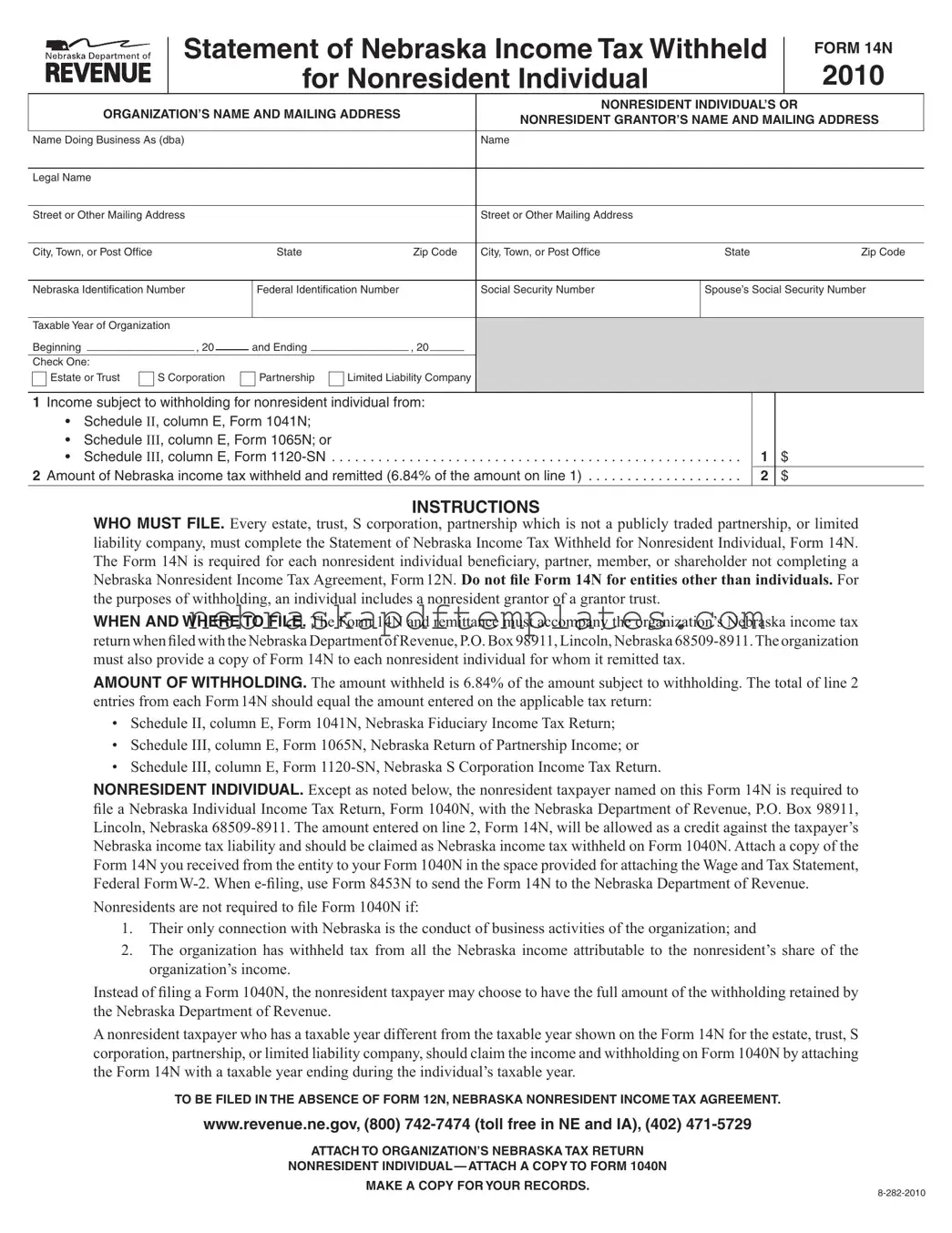The Nebraska 14N form is used to report the income tax withheld for nonresident individuals, including beneficiaries, partners, members, or shareholders of estates, trusts, S corporations, partnerships, and limited liability companies. It ensures that the appropriate amount of Nebraska income tax is remitted to the state on behalf of these nonresident individuals.
Every estate, trust, S corporation, partnership (not publicly traded), or limited liability company must complete the Nebraska 14N form for each nonresident individual for whom tax has been withheld. This includes nonresident grantors of grantor trusts. Entities should not file this form for individuals who have completed a Nebraska Nonresident Income Tax Agreement, Form 12N.
The Nebraska 14N form must be filed along with the organization’s Nebraska income tax return. It should be submitted to the Nebraska Department of Revenue at P.O. Box 98911, Lincoln, Nebraska 68509-8911. Additionally, a copy of the form must be provided to each nonresident individual for whom tax has been remitted.
The withholding amount is calculated at a rate of 6.84% of the income subject to withholding reported on the form. The total of the withholding amounts from each Nebraska 14N form must match the amounts reported on the applicable tax returns, such as Schedule II of Form 1041N or Schedule III of Form 1065N and Form 1120-SN.
